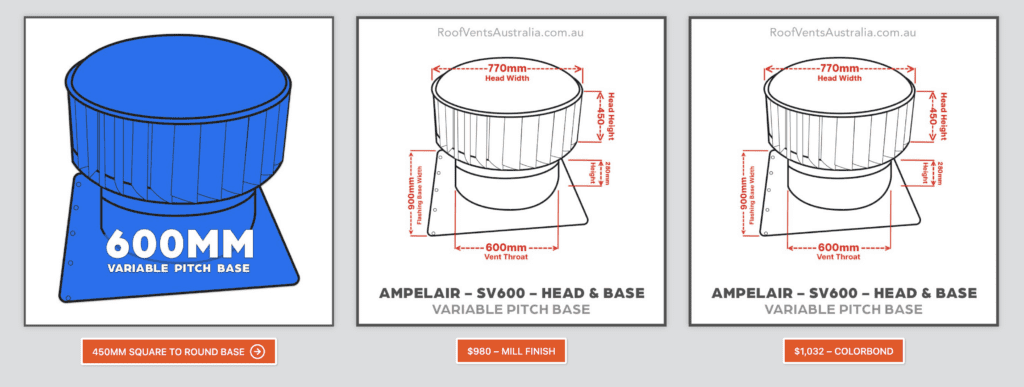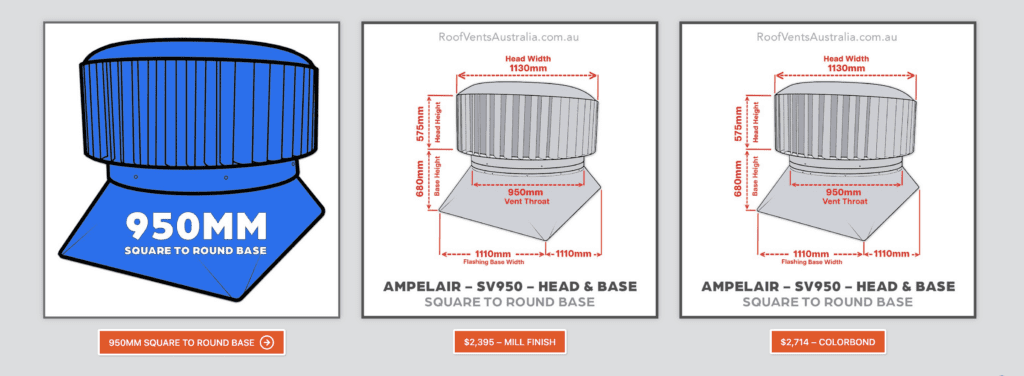Optimal Roof Ventilation Systems for Large Commercial Buildings in Australia: A State-by-State Analysis
Rain Heads Custom Made Shipped Free Australia Wide – Click Here >
Dambuster Rain Heads Shipped Free Australia Wide – Click Here >
Commercial Industrial Roof Vents 300mm-950mm – Click Here >
Eco-Friendly Roofing Insulation Shipped Free – Click Here >
Gutter Sumps Shipped Free Australia Wide – Click Here >
Abstract
Ventilation is a crucial element in the design and maintenance of large commercial buildings, as it plays a significant role in air quality, temperature control, and energy efficiency. Given Australia’s varied climatic conditions across different states and territories, it is essential to select a roof ventilation system that matches the specific environmental factors of each location. This article provides an in-depth analysis of various roof ventilation systems best suited for large commercial buildings, taking into consideration the local climates and energy regulations in each Australian state and territory.
Introduction
The roof is not merely a protective covering over a building but serves as an integral component in the building’s thermal and air management system. This is particularly true for large commercial buildings where proper ventilation can substantially impact operational costs and occupant comfort. The climate in Australia ranges from tropical in the north to temperate in the south, affecting the choice of roofing systems. Therefore, when specifying roof ventilation systems, several factors need consideration:
- Ambient Temperature
- Humidity Levels
- Wind Speed and Direction
- Local Building Codes and Regulations
- Energy Efficiency Ratings
Ventilation System Types
Passive Systems
- Ridge Vents: Suitable for buildings with a pitched roof, these run along the peak and allow hot air to escape.
- Turbine Vents: These use wind power to extract warm air but are less effective in low-wind areas.
Active Systems
- Mechanical Exhaust Vents: Electrically powered, these are highly effective but consume energy.
- Solar-Powered Vents: These combine natural and mechanical ventilation using solar power, offering an energy-efficient alternative.
Hybrid Systems
Combining features from both active and passive systems, hybrid systems adapt to varying environmental conditions, providing optimal performance.
State-by-State Analysis
New South Wales (NSW)
Climate: Temperate Recommended System: Hybrid Ventilation System Regulations: Comply with NCC (National Construction Code) Section J requirements. Rationale: With seasonal temperature variations, a hybrid system adapts to both hot summers and cool winters, meeting the energy efficiency regulations set by the NCC.
Queensland (QLD)
Climate: Tropical/Sub-tropical Recommended System: Solar-Powered Vents Regulations: QDC MP 4.1 (Sustainable buildings) Rationale: High temperatures and humidity require constant air exchange, which can be efficiently managed using solar-powered vents.
Victoria (VIC)
Climate: Temperate Recommended System: Mechanical Exhaust Vents with heat recovery Regulations: Victorian Energy Efficiency Target (VEET) Scheme Rationale: Given the cold winters and mild summers, mechanical systems with heat recovery can contribute to overall energy efficiency.
Western Australia (WA)
Climate: Arid/Tropical in North Recommended System: Passive Ridge Vents in the south, Solar-Powered Vents in the north Regulations: WA Building Regulations 2012 Rationale: The arid south can benefit from natural air exchange, while the hot, humid north would benefit from the energy-efficient, solar-powered systems.
South Australia (SA)
Climate: Mediterranean Recommended System: Mechanical Exhaust Vents Regulations: SA Development Act 1993 Rationale: Hot, dry summers and mild, wet winters require a balanced approach that mechanical exhaust vents can provide.
Tasmania (TAS)
Climate: Temperate Oceanic Recommended System: Mechanical Exhaust Vents with heat recovery Regulations: Building Act 2016 Rationale: The colder climate necessitates an active system with heat recovery to maintain energy efficiency.
Australian Capital Territory (ACT)
Climate: Continental Recommended System: Hybrid Ventilation System Regulations: ACT Planning and Land Authority requirements Rationale: Varied temperature ranges call for a flexible, adaptive system.
Northern Territory (NT)
Climate: Tropical Recommended System: Solar-Powered Vents Regulations: Building Act and Building Regulations Rationale: High humidity and heat make solar-powered systems ideal for energy efficiency.
Conclusion
The selection of a roof ventilation system for large commercial buildings in Australia is a complex task that must factor in various climatic, regulatory, and operational considerations. By understanding the specific needs and requirements of each state and territory, designers and builders can optimize for energy efficiency, operational cost, and occupant comfort.
References
- National Construction Code (NCC)
- Victorian Energy Efficiency Target (VEET) Scheme
- SA Development Act 1993
- Building Act 2016 (Tasmania)
- Building Regulations 2012 (WA)
Note: Consult local regulations and engage with experts for accurate project-specific recommendations.


